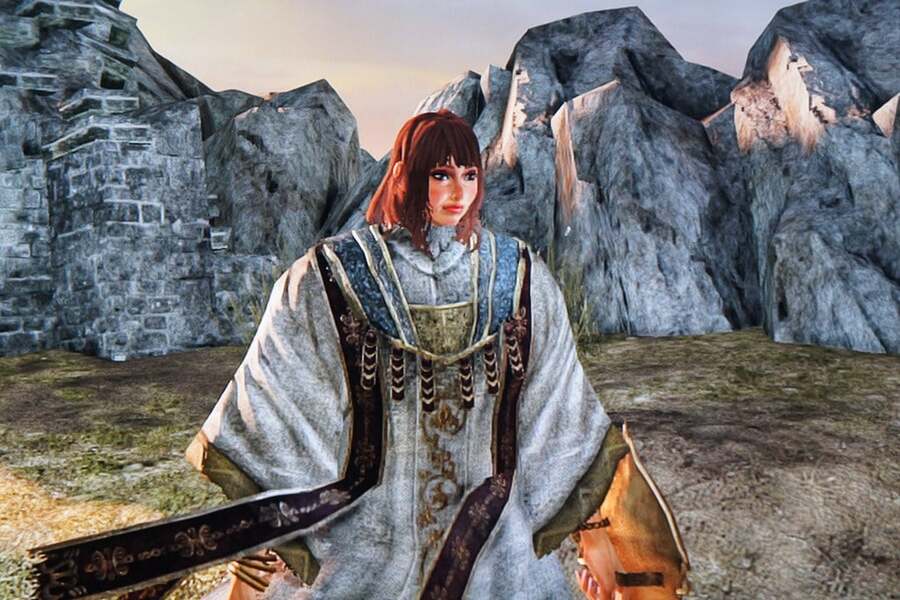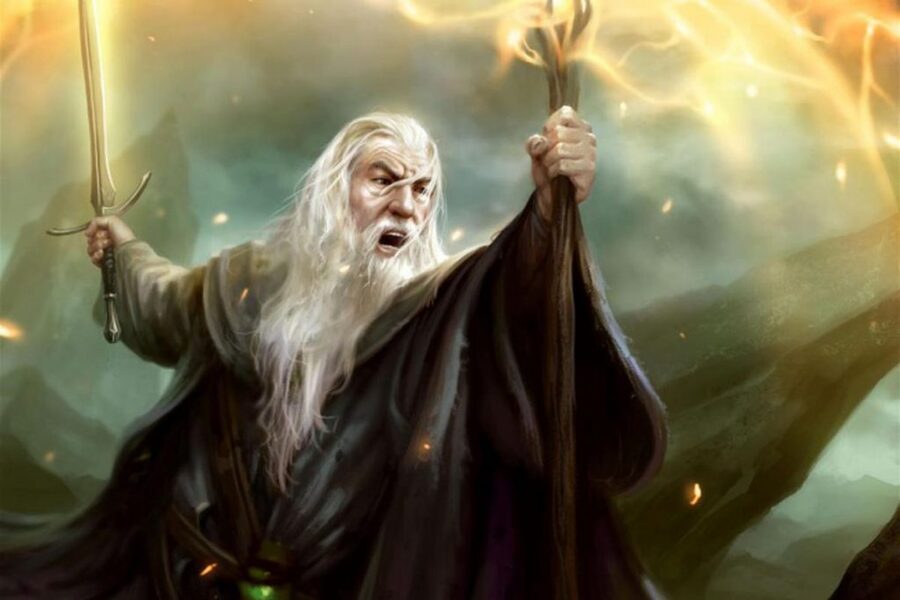Ever wondered how many cantrips a wizard can learn in DnD 5E? Look no further.
In the exciting world of Dungeons and Dragons, the magic-wielding wizard is a challenging class to ignore.
A crucial part of their magical ability lies in using cantrips – simple yet effective spells. But do you know exactly how many they can possess?
Beginning, a 1st-level wizard knows three cantrips from the wizard spell list. As they progress, they’ll acquire more while navigating various choices and strategies for compelling gameplay.
Whether you’re planning your campaign or just looking to maximize your character, this guide will help you understand the amount, quality, and tactical use of your wizard’s cantrips in DnD 5E.
Let’s go into this arcane knowledge together!
In a hurry? Here’s a quick & short answer that will help you out:
In Dungeons & Dragons 5th Edition, a 1st level wizard begins with three cantrips from the wizard spell list. As they advance in levels, they can learn more. By the 10th level, a wizard can know up to five cantrips, ensuring their magical repertoire is ever-growing and versatile.
Related: How Many Spells Can A Wizard Prepare In DnD 5e
Key Takeaways
- Wizards start with three cantrips at 1st level and can learn more as they level up.
- The number of cantrips a wizard can know increases with their level, with three cantrips at levels 1-3, 4 cantrips at levels 4-10, and 5 cantrips at levels 11-20.
- The wizard’s Intelligence modifier affects the number of cantrips they can know, with each positive point adding a cantrip slot.
- Multiclassing, feats, racial characteristics, and class attributes are all viable options for expanding one’s repertoire of cantrips.
What is a Cantrip in DnD 5E?

In DnD 5E, you’ll find that a cantrip is a particular type of spell that’s so simple and fundamental to your wizarding knowledge that you can cast it repeatedly without exhausting any of your magical prowess. It’s like the ABCs of magic; easy to learn, hard to forget.
Cantrips are unlike other spells because they don’t take up any slots. They have an unlimited number of uses in the game. They’re handy when you need a quick solution but want to save your more powerful spells for more demanding challenges.
Now, not all cantrips are created equal. Some are offensive, used in battle to harm enemies. Others are defensive or utility-based – think shields or light sources. And unlike other spells, which get stronger as you level up, most cantrips stay at their initial power level throughout the game.
So why do wizards need cantrips? They’re essential tools in every wizard’s arsenal because they offer flexibility and endless usage without draining magical resources. They may be essential magic but always appreciate their usefulness on your wizarding journey.
How Many Cantrips Does a Wizard Get in DnD 5E?
As you explore the arcane arts, you’ll begin your journey with three elemental spells, which can increase depending on your level and intelligence.
These spells are called cantrips in Dungeons & Dragons 5th Edition. As a wizard, the number of cantrips you can access is affected by various factors, such as your level progression and intelligence modifier.
Here’s a chart that might help illustrate how it works:
| Wizard Level | Number of Cantrips Known |
|---|---|
| Level 1-3 | 3 |
| Level 4-10 | 4 |
| Level 11-20 | 5 |
Your Intelligence modifier also plays a significant role. You gain an additional cantrip slot for each positive point in your Intelligence modifier. Thus, if your Intelligence score is 15 (+2), you would start with five instead of three cantrips at the first level.
It’s essential to remember that some class features or racial traits may also offer extra cantrips. So consider this when creating or leveling up your character. The more tactics up your sleeve, the better equipped you’ll be for whatever encounters await!
Wizard Cantrip Choices in DnD 5E

Choosing the right cantrips for your wizard character isn’t just about magical firepower. It’s also a crucial part of defining their personality and playstyle. Your cantrip choices should align with your concept of the character you’re playing.
Here are three considerations to keep in mind:
- Roleplay: Some cantrips such as ‘Prestidigitation,’ ‘Mage Hand,’ or ‘Message’ may not be compelling in combat but can be incredibly useful in roleplaying scenarios.
- Combat Style: Cantrips like ‘Fire Bolt’ and ‘Ray of Frost’ offer different types of damage, range, and additional effects. It’s essential to choose those that match your overall battle strategy.
- Utility: Some cantrips provide practical benefits outside combat, such as ‘Light,’ which illuminates dark areas, or ‘Mending,’ which can fix broken objects.
Remember that wizards begin with three cantrips from the wizard spell list in DnD 5E. As you level up, you get more; four at the 4th level and five at the 10th level. These choices will shape your character’s abilities and interactions within their world – so choose wisely!
Related: Top 7 Best Heavy Armors In DnD 5e
How to Choose Your Wizard Cantrips
Navigating the realm of arcane arts, you’ll need to carefully select spells that best define your role in and out of battles. Your opening step is understanding cantrips. As a wizard in DnD 5e, you start with three cantrips from the wizard spell list.
The choice of cantrips is essential since they’re the spells you can cast at will without using up a spell slot. They should balance offensive power and utility for different situations. For example, ‘Fire Bolt’ provides good ranged damage while ‘Mage Hand’ gives flexibility in manipulating objects from a distance.
Bear in mind your campaign setting too. If it’s more urban-based, social interaction spells like ‘Friends’ may be helpful; if it’s wilderness or dungeon heavy, choose more combat-oriented or exploration-friendly cantrips.
Remember that as you level up as a wizard, you gain additional cantrips – one each at levels 4 and 10. It allows some wiggle room to add to your repertoire over time.
So take your time picking your initial cantrips; they’re not just about blasting foes but also shaping how you connect with the world around you!
Tactics for Using Cantrips Effectively

Mastering the art of deploying your most basic spells isn’t only about dishing out damage and considering strategy and finesse. As a wizard’s fundamental magic in DND 5e, Cantrips can provide utility both in and out of combat. It’s essential to use them strategically to maximize their effectiveness.
When using cantrips, prioritize versatility. Choose cantrips with various damage or effects to prepare you for any situation.
Utilize control effects. Some cantrips don’t just deal damage but also possess crowd-control capabilities.
Surprise your enemies. Employ illusion-based cantrips to distract, confuse, or intimidate adversaries.
Capitalize on your surroundings. Use elemental-based cantrips like ‘shape water’ or ‘control flames’ to manipulate the environment.
Remember that not every encounter needs to end in a battle. Often, casting a simple ‘prestidigitation’ to impress an NPC or using a ‘mage hand’ for stealthy tasks is enough. You have various magical tools at your disposal – learn how to wield them wisely and innovatively for optimal results!
Can wizards learn new cantrips at higher levels?
Contrary to what many think, wizards don’t learn additional cantrips as they level up, which may seem a disadvantage. However, the power of their existing cantrips can increase at certain levels, adding an exciting layer of strategic depth to their spellcasting capabilities. Scaling is a core mechanic for wizards in Dungeons & Dragons 5th Edition.
So how does scaling work? It’s simple: certain spells become more potent as your character attains higher levels. Take Fire Bolt, a typical wizard cantrip, for example. At level 1, this spell deals 1d10 damage. But when you reach the 5th level, it boosts to 2d10, then again at the 11th and 17th levels.
Remember that not all cantrips scale this way. Some have effects that don’t change with your level but can still be helpful throughout your journey. Reading each spell description is essential – you must know what each does!
This system adds another level to the combat strategy for wizards. Even though they won’t get new cantrips at every level-up, the ones they start with don’t stay the same – we become more robust as they do!
Are there ways to gain additional cantrips?

When you’re feeling limited by your initial spell choices, take heart – there’s a ray of magical light at the end of the tunnel! You may have started with only a few cantrips as a wizard in DnD 5e, but there are ways to gain additional ones.
- Multiclassing: If you choose to multiclass into another spellcasting class, such as sorcerer or bard, you’ll get their starting cantrips too.
- Feats: Certain feats like Magic Initiate and Spell Sniper offer extra cantrips.
- Racial Traits: Races like High Elf or Tiefling provide bonus cantrips.
- Class Features: Certain subclasses present additional spells, including cantrips.
Each option has advantages and drawbacks that could significantly shape your character’s development and gameplay experience. It’s not just about adding more spells to your arsenal; it’s about expanding your capabilities and creating new possibilities for action sequences. These strategic decisions will help evolve your character from a novice magician to a formidable spellcaster.
Remember that gaining more magic isn’t only about quantity – it also provides an opportunity for creativity and strategy in your gameplay, making the journey even more thrilling than simply reaching higher levels with more power.
Related: How To Use Augury In DnD 5e
Conclusion
So, you’re all caught up on wizard cantrips in DnD 5E. You start with a few options, and as you level up, you’ll learn more.
But it’s not just about having plenty of spells – it’s about making the right choices. So sharpening your mental skills, select your spells carefully, and prepare to cast your way to greatness.







[…] Related: How Many Cantrips Does A Wizard Get In DnD 5e? […]